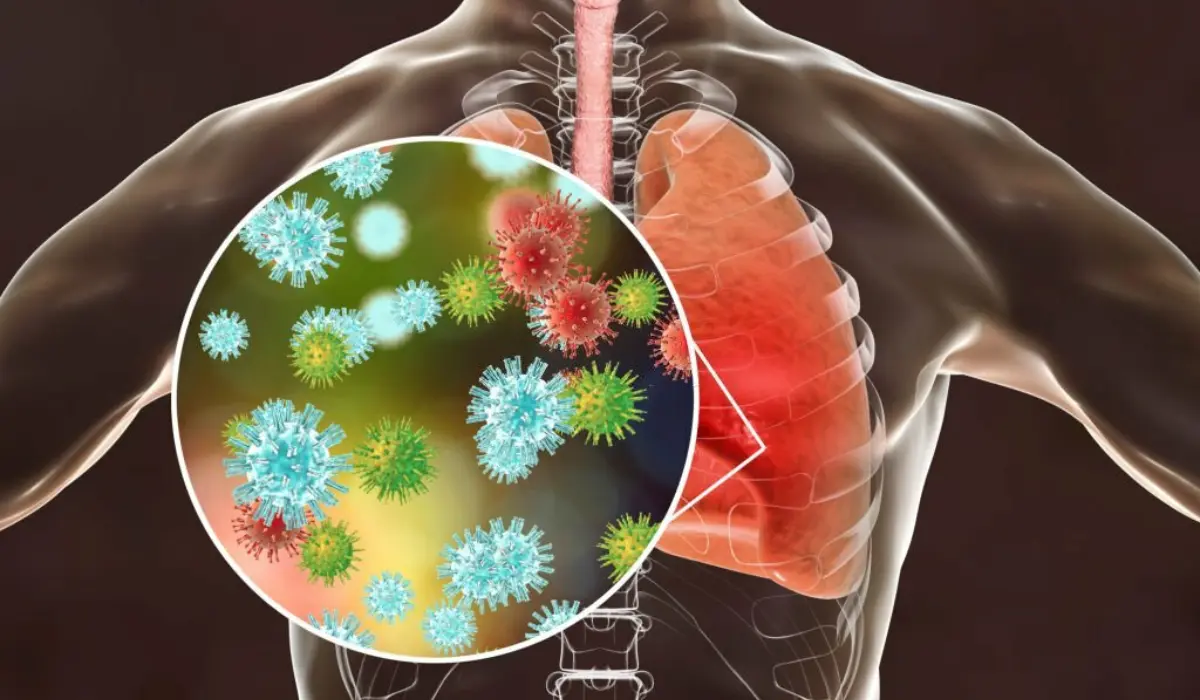Upper respiratory infections (URIs) attack the upper respiratory system, which includes the sinuses and throat. Germs, viruses, or allergies can cause them, and they are frequently experienced.
It’s essential to understand the contagiousness of URIs because of the ease with which they can move from one person to another, particularly in crowded settings or close contact with an infected individual.
This article will discuss the definition of URIs, common URI types, symptoms, causes, mechanisms of transmission, and risk factors. It will also highlight the value of adopting proactive measures to defend oneself and others from these infections and offer helpful advice for stopping the spread of URIs.
What Is Upper Respiratory Infection?

Upper respiratory infections (URIs) are self-limiting. They cause swelling and irritation of the upper airways with a cough and no evidence of pneumonia. URIs affect the larynx, pharynx, sinuses, nose, and other major airways.
The common cold, flu, sinusitis, pharyngitis, epiglottitis, and laryngotracheitis are instances of URIs that are frequently encountered.
Coughing, sneezing, congestion, sore throat, and fever are typical signs of URIs.In an outpatient setting, URIs are among the most prevalent illnesses that healthcare professionals see. Children who get 6–8 infections yearly have the highest URI incidence.
Nasal obstruction and discharge, sneezing, sore throat, and coughing are the primary signs of URIs. Children are more likely to have low-grade fevers than adults.
Causes Of Upper Respiratory Infections
Viruses and bacteria that affect the upper respiratory system, including the sinuses and throat, are the main culprits behind upper respiratory infections (URIs). A few URI causes include the ones listed below:
Several viruses and bacteria, such as influenza, acute bronchitis, and respiratory distress syndromes, can bring viruses or bacterial illnesses to URIs.
Connection to diseased individuals: Infected people coughing or sneezing can transfer URIs to others through touch.
Pollution and other irritants: Pollen, pollution, and other irritants can aggravate the respiratory system and increase its susceptibility to illness.
Secondhand smoke: Secondhand smoke exposure and smoking can harm the respiratory system and increase its susceptibility to illness.
Stress and sleep deprivation: These two factors might impair immunity and make it more challenging for the body to fight against illnesses.
Structural problems: Nasal polyps and deviated septums can increase a person’s susceptibility to sinus infections.
All ages are susceptible to URIs, but children are more likely to contract them. Coughing, runny nose, sneezing, sore throat, and fever are URI symptoms. Symptoms and a physical examination are commonly used to identify URIs. Home remedies, including rest, fluids, and over-the-counter pain relievers, are frequently used in URI treatment.
Factors Influencing Contagion And Risk
Viral, host immunity and hygiene practices are a few variables that can affect how contagious upper respiratory infections (URIs) are. Higher viral loads can enhance the risk of transmission. Viral load is the quantity of virus present in an infected person’s respiratory secretions.
The degree of a person’s symptoms and likelihood of infection are both influenced by host immunity. The transmission of URIs can be slowed down by following good hygiene habits, including routine hand washing and covering the mouth and nose when coughing or sneezing.
Due to weakened immune systems and increased exposure to other individuals, some populations, such as children and older people, maybe more prone to contagious URIs.
Children are more susceptible to illness because they spend more time with other children and are less likely than adults to wash their hands after sneezing or wipe their noses when necessary. Due to changes brought on by aging, the elderly may have weakened immune systems and are, therefore, more susceptible to infections.
Is Upper Respiratory Infection Contagious?
The answer is that upper respiratory infections (URIs) spread easily. Through hand-to-hand contact or breathing droplets, they can be transferred from one person to another. Before they even have symptoms, those who have a URI might spread it to others.
The first two to three days are typically the most contagious. The person may still be contagious if green or yellow mucous is present. URIs are fairly frequent and can be brought on by bacteria or viruses. Nasal congestion, coughing, sore throat, runny nose, and fever are URI symptoms. It’s crucial to practice basic hygiene to stop the transmission of URIs, such as washing your hands and covering your mouth and nose when coughing or sneezing.
How To Prevent And Treat Upper Respiratory Infections?
Viruses can be the cause of upper respiratory infections (URIs), which are frequent. The following advice can help you take care of yourself if you become ill, as well as stop the spread of URIs:
Prevention
- Maintain proper hygiene by regularly washing your hands and protecting your mouth and nose when you cough or sneeze.
- Stay away from anyone who has the flu for as long as possible.
- Use a humidifier to maintain moisture in the air and stop the development of mold and bacteria.
- Consume a nutritious, vitamin- and mineral-rich diet.
- Get adequate rest.
Treatment
- Rest and a lot of fluids are the best treatments.
- Take painkillers and fever reducers from the pharmacy.
- Warm salt water gargling might help soothe a sore throat.
- To clear up nasal congestion, use saline nasal drops.
- If your symptoms persist for over two weeks or you get a high temperature, breathing problems, chest discomfort, dizziness, or loss of consciousness, you should see a doctor.
- Due to weakened immune systems and increased exposure to other individuals, some populations, such as children and older people, maybe more prone to contagious URIs.
Conclusion
Contagious upper respiratory infections (URIs) can be passed from one person to another through hand-to-hand contact or respiratory droplets. The first two to three days are typically the most contagious.
To stop the spread of URIs, practicing proper hygiene, such as routinely washing your hands and covering your mouth and nose when coughing or sneezing is crucial. Consult a doctor if your symptoms persist for more than two weeks or if you experience a high temperature, breathing difficulties, chest discomfort, dizziness, or loss of consciousness.

